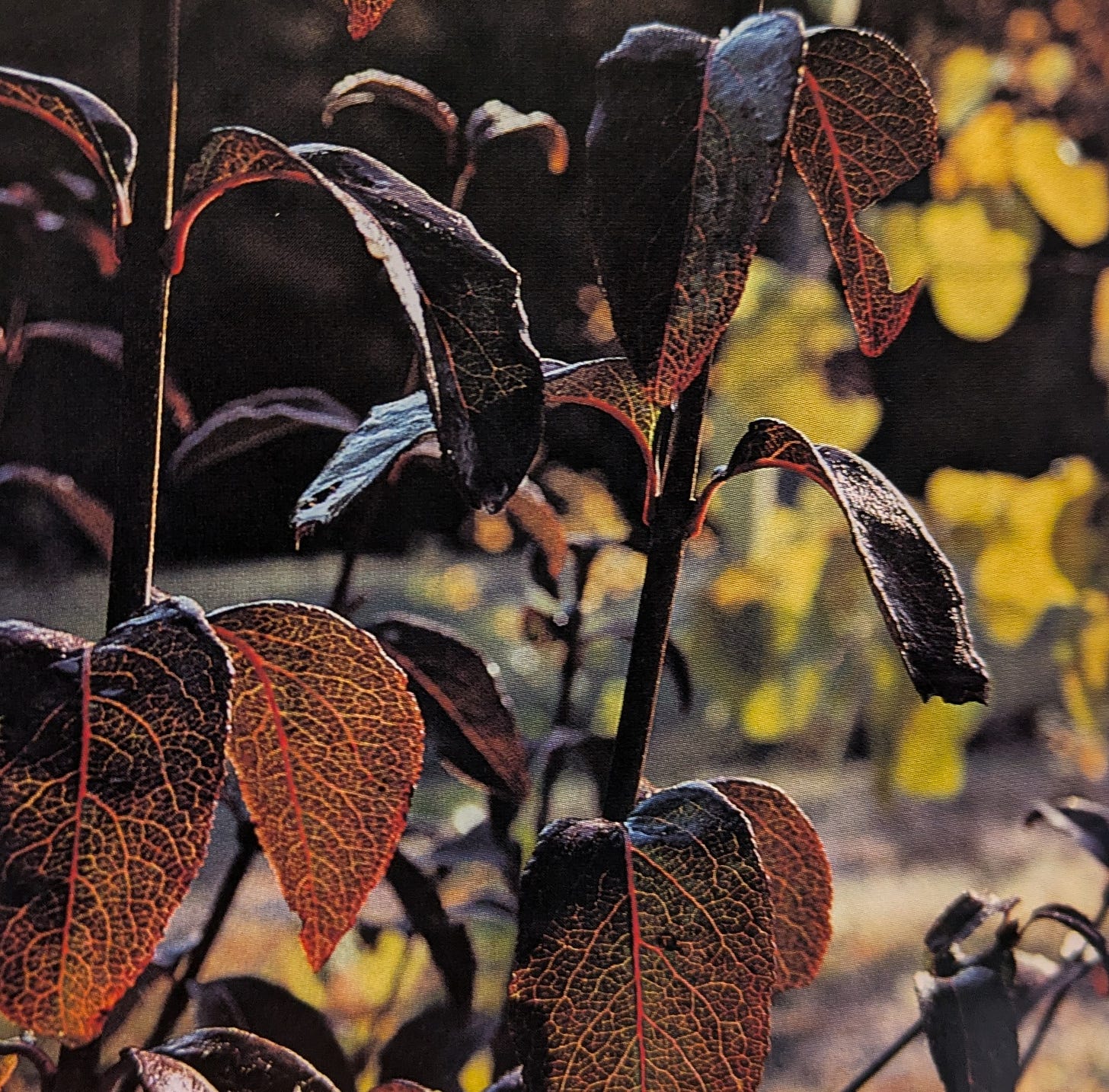At last, Rusty Blackhaw has arrived!
It’s more than a nom-de-plume.
For a long time, I’ve coveted Viburnum rufidulum a.k.a. rusty blackhaw, a large shrub or small tree native to parts of the Midwest and upper South, extending into the Florida panhandle and west to Texas, known not only for its white flowers but for exceptional red-purple fall color.
While other viburnums are commonly offered in garden centers and via mail order, V. rufidulum has been hard to come by, except through a few seed sources. Finally, I located a native plant nursery offering potted specimens, and ordered a couple which arrived this past week.
Rusty blackhaw, or as the Morton Arboretum prefers to call it, “southern black-haw” grows to 10-20 feet in its preferred habitat (the national champion tree reached 25 x 30 feet in Hampstead City, AR), which comprises open to denser woodlands and along streams. It’s adaptable to various soils, preferring good drainage (as we all do) and producing more of its dark blue fruit in sunny locations. The best-known common name refers to the rusty-colored hairs on its leaves, which distinguish it from the related blackhaw viburnum V. prunifolium. Flowers are fragrant (the extent of which varies according to who’s writing about it) and attract pollinators.
In his Manual of Woody Landscape Plants, Michael Dirr writes “I have developed a real fondness for this species…Excellent plant and should be used more widely..Displays excellent drought tolerance and has withstood -25F in Midwest without damage...‘Royal Guard’ has excellent glossy dark green foliage that turns rich burgundy to deep maroon in autumn, supposedly grows 12’ by 6’ high, have read 10 to 20’, flowers and fruits similar to the species; hardiness is often debated but 15’ high specimens have withstood -20 to -25F at the Morton Arboretum.”
As to enlivening mixed borders with shrubs, I’m gradually incorporating more of them in addition to the 15 or so crepe myrtles that grace both the main border and annex bed, including small tree forms and die-back shrubs.
Added last year, Calycanthus floridus ‘Aphrodite’ is a sweetshrub highly rated by the Chicago Botanic Garden in its trials, primarily for floral impact.
Opinions on this variety’s floral fragrance (a major reason for growing the shrub are mixed. According to Oregon State University, “Here is what one nursery said about detecting the flower's fragrance. It depends. "The scent varies based on the age of the bloom, the time of day, and the flower itself. Some people say they smell like pineapple, others apples, others bubblegum, and some get no scent at all." We’ll see how it turns out.
If ‘Aphrodite’ doesn’t overwhelm in the fragrance department, there are two lilac cultivars at the back of the main border which are still getting established and should bloom in upcoming seasons. So far the only dependable lilac I’ve found is one of the littleleaf lilacs which is thriving in a filtered sun location by the front walkway and is loaded with buds this spring.
Otherwise, shrub-esque impact in the garden is supplied by several varieties of hardy banana, just starting to emerge from winter dormancy on their way to forming 8 to 10-foot-high clumps of broad-leafed tropical foliage.
Getting back to rusty blackhaw viburnum, I’ll be raising one of my two plants as a mixed border shrub. The other will be cultivated separately as a small tree. While it may never attain 30-foot-tall champion size, it’ll have every opportunity to reach its full potential.







